ALL THAT JAZZ
Exploring Jazz Music
Introduction | Background Knowledge | Activities | Extensions | Standards
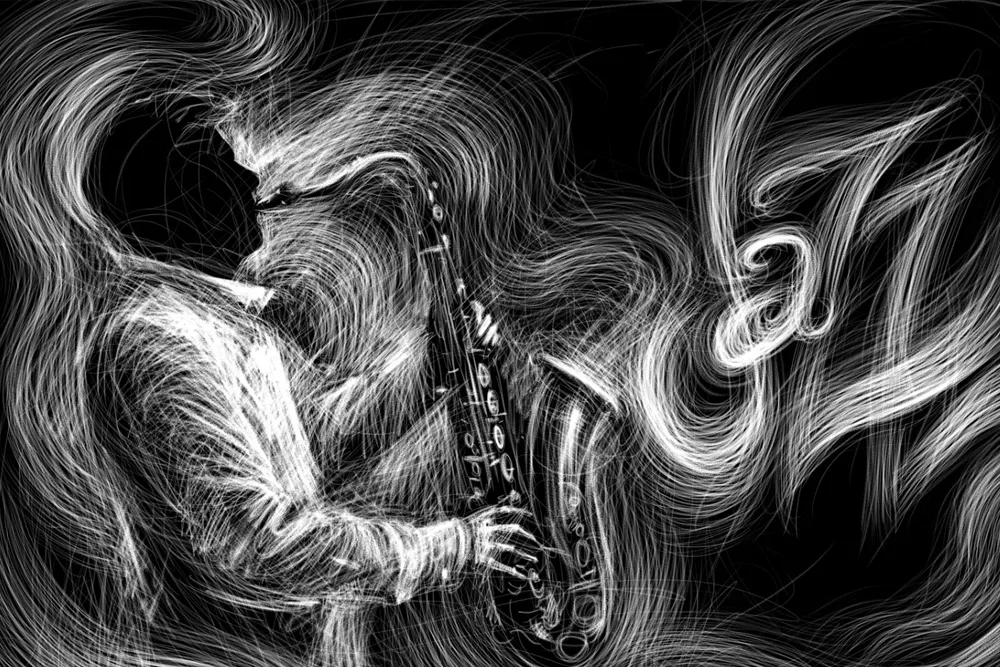
Introduction
Jazz is many things. It can be a verb - an action that enhances or livens up. It can be a vague and unspecified noun, a synonym for "stuff." But the most common meaning of jazz is both a noun and a verb. It is a type of music that is quintessentially American. As a noun, it is a type of music defined by its unconventional rhythms and melodies where improvisation becomes the rule. As a verb, it is the playing of such music. In the United States, jazz music has become a movement that has spanned decades.
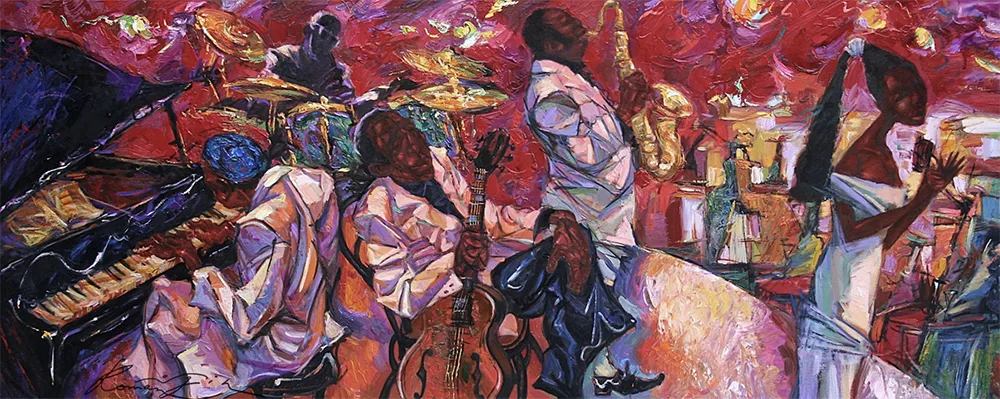
Background Knowledge
New Orleans allowed enslaved people to gather in Congo Square on Sundays for fellowship and music-making throughout the early 1800s. Musicians had traditional African instruments, such as marimbas and drums, as well as European instruments such as violins and tambourines. As the elements of traditional African culture and European culture melded, the African American culture in the United States was born. These gatherings ended as rules and restrictions tightened during the years leading up to the Civil War. However, music returned to Congo Square in the late 1800s with concerts featuring Blues and Ragtime.
As these musical gatherings and concerts continued, a new genre of music was born. Blending elements of ragtime and blues, jazz emerged in New Orleans in the early 1900s. The term "jazz" was first used in print in 1913, and an all white ensemble recorded the first jazz music in 1917. The genre is based on the Ragtime and Blues styles but has evolved into its own classic style.
As the Original Dixieland Jass Band (an all-white band) was recording jazz music, African American jazz musicians were leaving New Orleans and taking the new jazz style with them. In the 1920s and 1930s, New York City grew into the jazz capital of the United States, with great musicians like Duke Ellington performing in nightclubs around the city. The 1940s and 1950s saw Dizzy Gillespie and Charlie Parker introduce a subgenre of jazz called bebop, characterized by syncopation, solos over chord changes, and faster playing. The heyday of jazz was from the 1920s through the 1940s, but the genre's resilience keeps it relevant. Jazz slowed down in the 1960s as Miles Davis and John Coltrane came onto the scene. Throughout the end of the 1900s and into the 2000s, jazz has remained a staple of American music. Jazz Festivals were born and are held annually around the country. Jazz musicians are commemorated on coins and postage stamps. Lincoln Center in New York City established a jazz division and erected a concert hall dedicated to jazz. Music schools such as Julliard created degree programs in jazz and jazz studies. International Jazz Day was established and continues to share jazz music and history with listeners worldwide. The Covid-19 pandemic was a challenge for the jazz scene. Many clubs closed and could not reopen, but the musicians persevered and presented concerts and master classes virtually. Jazz music continues to evolve and stay relevant as the 21st century continues.
While jazz has evolved to include subgenres such as bebop, cool jazz, fusion, and more, the basic characteristics of jazz music have stayed constant. Jazz listeners can expect to hear distinctive rhythms. These could be the swinging eighth notes of traditional jazz or a more syncopated rhythm of Latin jazz. Unlike the basic chordal structure of country, pop, and folk music, jazz includes the "blue note", which is the raising or lowering of a note to change the tonality. Jazz also uses the 7th tone of the scale and the 11th, 13th, 15th, and beyond. Finally, improvisation can be found in most types of jazz. Improvisation is when a musician decides what to play as they are playing.
These elements of jazz can be accomplished using any instrument, but eight instruments define the jazz sound. Drums keep the beat for the jazz ensemble. Famous drummers include Art Blakey and Max Roach. You will also find a bass or double bass, keyboard, or guitar in the strings section. Well-known musicians include Charles Mingus on the bass, Thelonius Monk on the keyboard, and Wes Montgomery on the guitar. Brass and reed instruments include trumpets, trombones, and saxophones. Jazz greats include Louis Armstrong and Wynton Marsalis on trumpet, Robin Eubanks on trombone, and Charlie Parker and John Coltrane on saxophone. Finally, many jazz greats are lead vocalists. Famous names include Billie Holiday and Ella Fitzgerald.
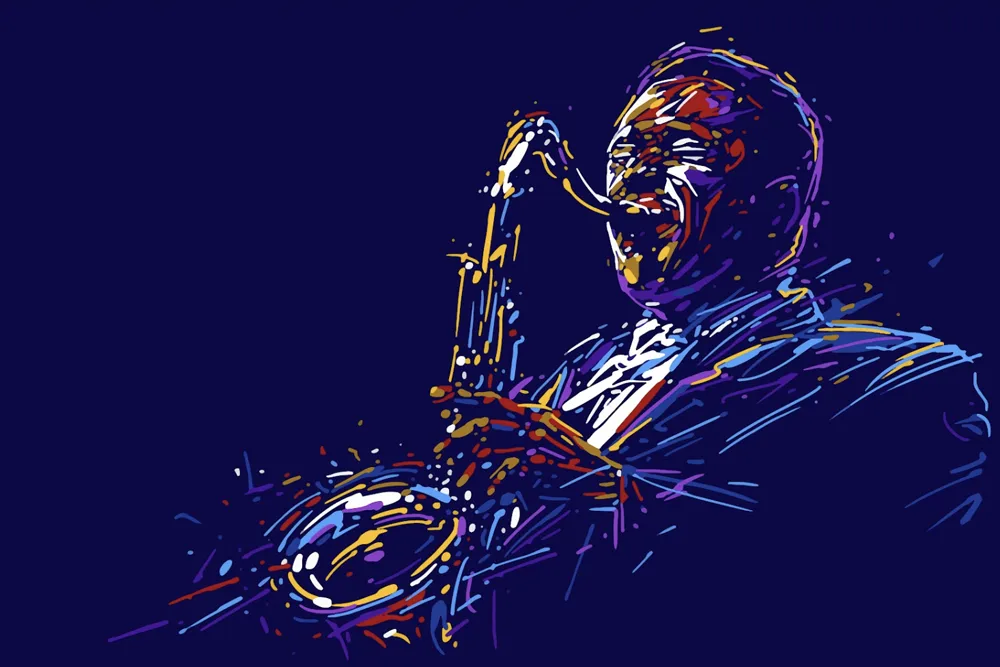
ACTIVITIES
-
Selected List of Picture Books
- Trombone Shorty by Troy Andrews (ISBN 978-1419714658) - This is an autobiography of Troy "Trombone Shorty" Andrews, and his path to fulfilling his dream of playing music.
- This Jazz Man by Karen Ehrhardt (ISBN 978-0544339224) - Set to the classic "This Old Man," this book introduces readers to ten jazz greats. There is excellent information in the end notes, and the text can be extended by listening to the music given in the end notes.
- The Little Piano Girl by Ann Ingalls (978-0618959747) - This book introduces readers to Mary Lou Williams, an African American jazz pianist.
- Duke Ellington: The Piano Prince and His Orchestra by Andrea Pinkney (978-0786814206) - This is a biography of jazz great Duke Ellington.
- Charlie Parker Played Be Bop by Chris Raschka (ISBN 978-0531070956) - This book incorporates onomatopoeia and information about Charlie Parker in an easy read.
- Little Melba and Her Big Trombone by Katheryn Russell-Brown (ISBN 978-1600608988) - Melba Doretta Liston loves music. She teaches herself to play the trombone at seven years old, is on the radio at eight, and is a professional at 17. She became a renowned trombonist and arranger and partnered with many jazz greats, including Duke Ellington and Billie Holliday.
- Squeak, Rumble! Whomp! Whomp! Whomp! By Wynton Marsalis (ISBN 978-1536221961) - A young boy hears music in the sounds around him.
- Before John Was a Jazz Giant by Carole Boston Weatherford (ISBN 978-0805079944) - This book illustrates how John Coltrane grew up in the south and was influenced by church music, preachers preaching, and the radio playing all paved the way for his great musical career.
- Dizzy - Jonah Winter (ISBN 978-0439507370) - Dizzy Gillespie overcame his challenging childhood to become a great, ground-breaking musician.
- Incorporate lessons about Jazz in America (TeachersFirst review) in 5th, 8th, and 11th-grade classes with a resource from the Herbie Hancock Institute of Jazz. Activities include video and audio clips, discussion questions, and student workbooks.
- Liven up a lesson about map skills with "A Train" by Duke Ellington. Have students improvise directions to places on the map. They can draw their own maps and create their own words for the song. Use Google My Maps (TeachersFirst review) to create and share online maps that include links to videos, images, articles, and more.
- Learn about adjectives with Louis Armstrong and "What a Wonderful World." Students identify the adjectives in the song and can write their own lyrics to describe items in the classroom or around them. Ask students to share their lyrics using the tools found at Adobe Express for Education (TeachersFirst review). Adobe Express provides many options including creating animations, videos, and presentations.
- Merge the study of jazz with dance and poetry with this lesson from the Kennedy Center.
- Teach fractions to jazz music. This plan, though written for high school grades, can be adapted for younger students.
- Explore the jazz resources from the National Museum of American History (TeachersFirst review).
- Evolve along with jazz with PBS's Interactive Roots of Jazz map (TeachersFirst review). After viewing this interactive, ask students to work together in groups to create an interactive presentation about jazz using Genially (TeachersFirst review). Search Genially to find templates to edit to fit students' desires such as this one about History's 10 Most Emblematic Jazz Pianists, or have students edit this Guess the KPop Quiz Song template to create a quiz about important events and people in jazz history.
- Create an interactive blended learning activity that includes all your jazz lessons using Blendspace (TeachersFirst review). Include any or all of the activities above, along with documents, videos, and quizzes. In Blendspace, use the keyword search feature to search for jazz, then copy and modify templates such as this one about the Jazz Age to fit your needs.
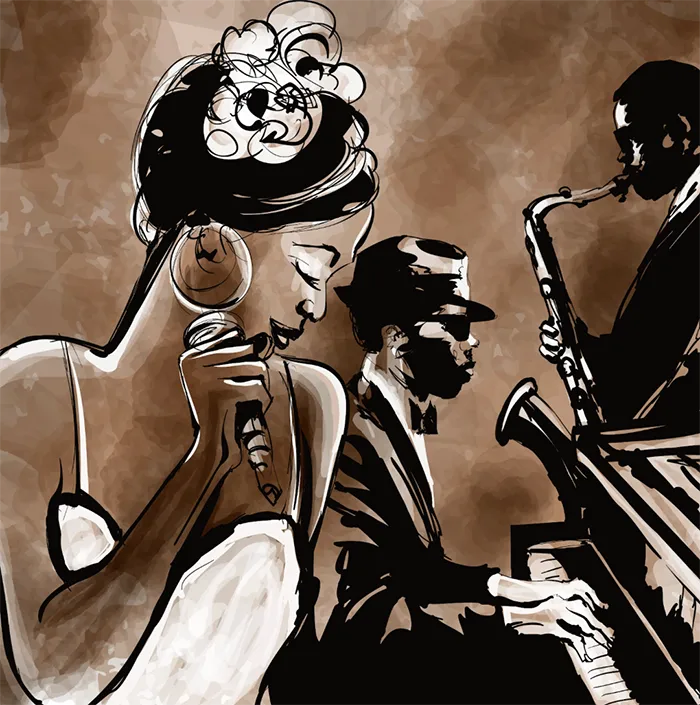
EXTENSIONS
-
Compare and Contrast
- Play jazz renditions of popular songs. Compare the covers to the original music. Students can compare and contrast what they hear in each version. For a technology approach, try Canva's Venn Diagram Creator (Teachers First review).
-
Integrate
- Engage students by introducing jazz into lessons about the Cold War and Civil Rights during the 1950s or as part of lessons about the 1920s. Use lessons and information from The Jazz Ambassadors to provide historical context and perspective.
-
Give It a Try
- Play with the jazz style with Google Art and Culture's Paint with Music (TeachersFirst review) .
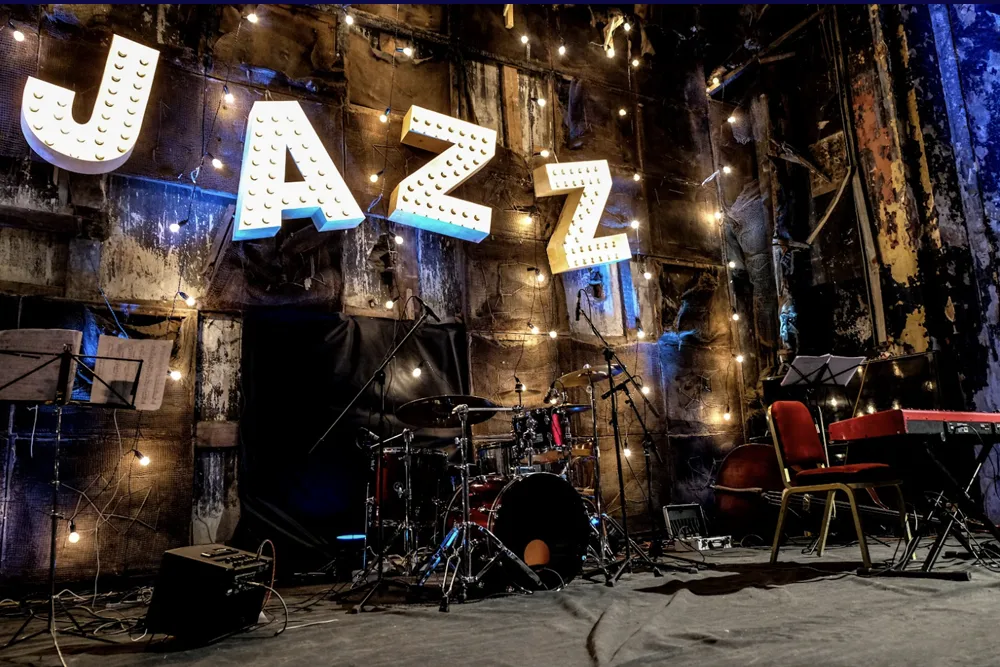
CORRELATION TO STANDARDS
-
AASL National School Library
Standards
- Inquire Shared Foundation, Think Domain - Learners display curiosity and initiative by: 1. Formulating questions about a personal interest or a curricular topic. 2. Recalling prior and background knowledge as context for new meaning.
- Inquire Shared Foundation, Share Domain - Learners adapt, communicate, and exchange learning products with others in a cycle that includes: 1. Interacting with content presented by others. 2. Providing constructive feedback. 3. Acting on feedback to improve. 4. Sharing products with an authentic audience.
- Include Shared Foundation, Share Domain - Learners exhibit empathy with and tolerance for diverse ideas by: 1. Engaging in informed conversation and active debate. 2. Contributing to discussions in which multiple viewpoints on a topic are expressed.
- Include Shared Foundation, Grow Domain - Learners demonstrate empathy and equity in knowledge building within the global learning community by: 1. Seeking interactions with a range of learners.
- Collaborate Shared Foundation, Think Domain - Learners identify collaborative opportunities by: 1. Demonstrating their desire to broaden and deepen understandings. 2. Developing new understandings through engagement in a learning group. 3. Deciding to solve problems informed by group interaction.
- Collaborate Shared Foundation, Create Domain - Learners participate in personal, social, and intellectual networks by: 1. Using a variety of communication tools and resources. 2. Establishing connections with other learners to build on their own prior knowledge and create new knowledge.
- Collaborate Shared Foundation, Grow Domain - Learners actively participate with others in learning situations by: 2. Recognizing learning as a social responsibility.
- Explore Shared Foundation, Think Domain - Learners develop and satisfy personal curiosity by: 1. Reading widely and deeply in multiple formats and writing and creating for a variety of purposes.
- Explore Shared Foundation, Create Domain - Learners construct new knowledge by: 1. Problem solving through cycles of design, implementation, and reflection.
- Explore Shared Foundation, Share Domain - Learners engage with the learning community by: 3. Collaboratively identifying innovative solutions to a challenge or problem.
- Explore Shared Foundation, Grow Domain - Learners develop through experience and reflection by: 1. Iteratively responding to challenges. 2. Recognizing capabilities and skills that can be developed, improved, and expanded. 3. Open-mindedly accepting feedback for positive and constructive growth.
-
ISTE Standards for Students
- Empowered Learner - 1b. Students build networks and customize their learning environments in ways that support the learning process. 1c. Students use technology to seek feedback that informs and improves their practice and to demonstrate their learning in a variety of ways.
- Knowledge Constructor - 3d. Students build knowledge by actively exploring real-world issues and problems, developing ideas and theories, and pursuing answers and solutions.
- Innovative Designer - 4d. Students exhibit a tolerance for ambiguity, perseverance, and the capacity to work with open-ended problems.
- Global Collaborator - 7c. Students contribute constructively to project teams, assuming various roles and responsibilities to work effectively toward a common goal.
